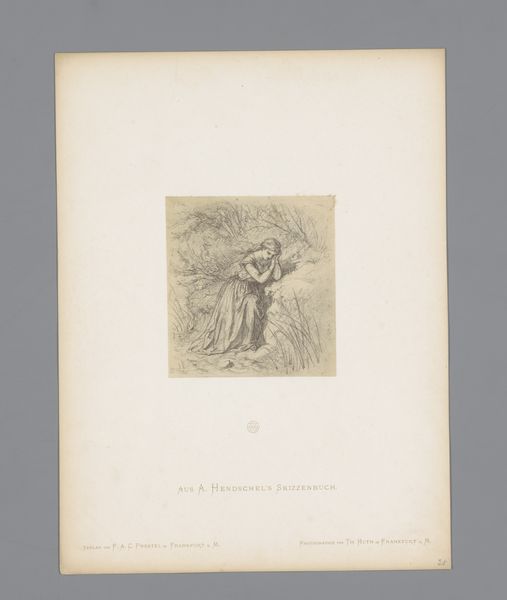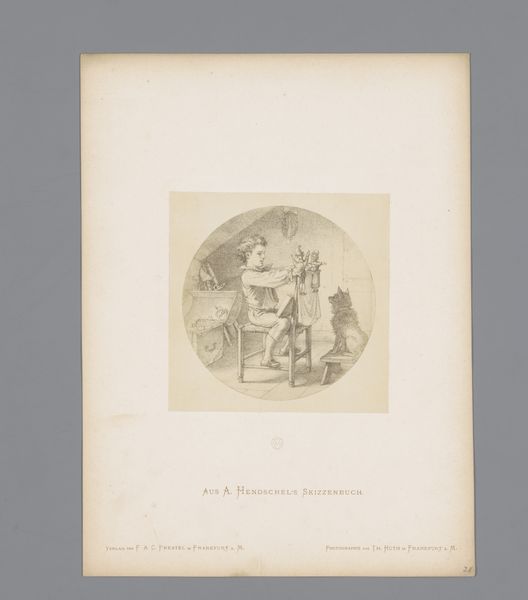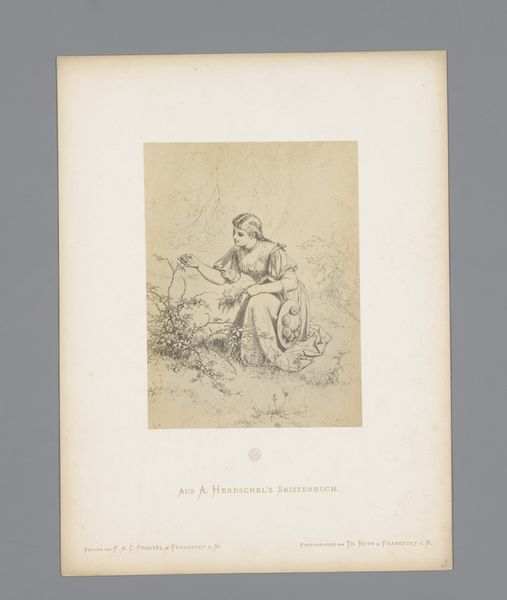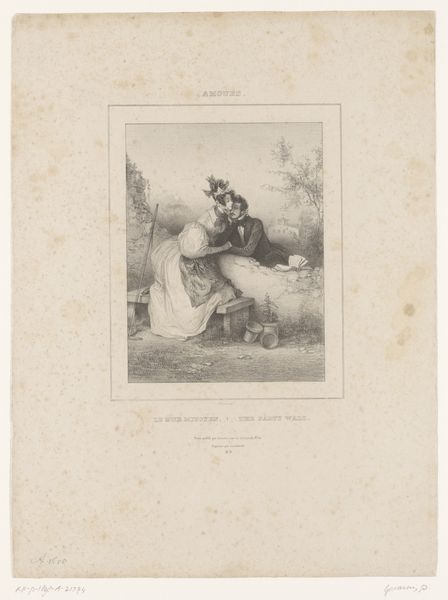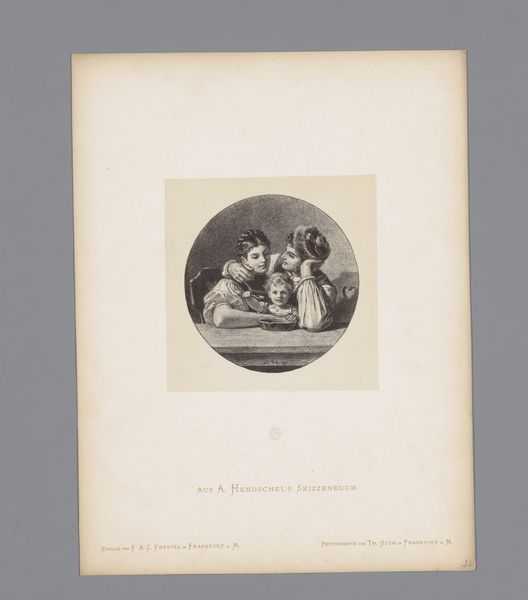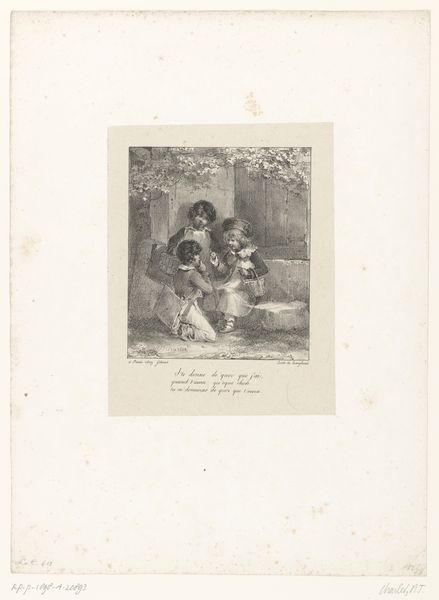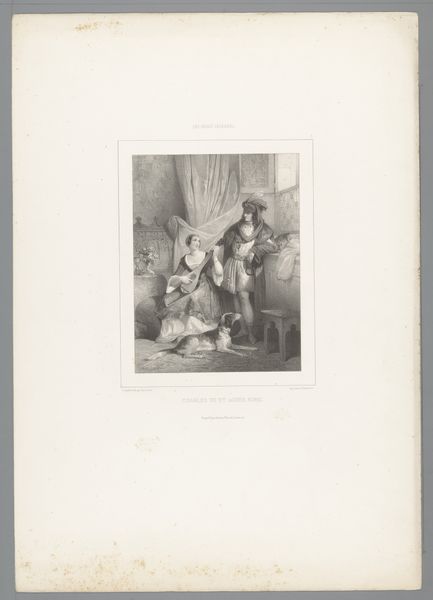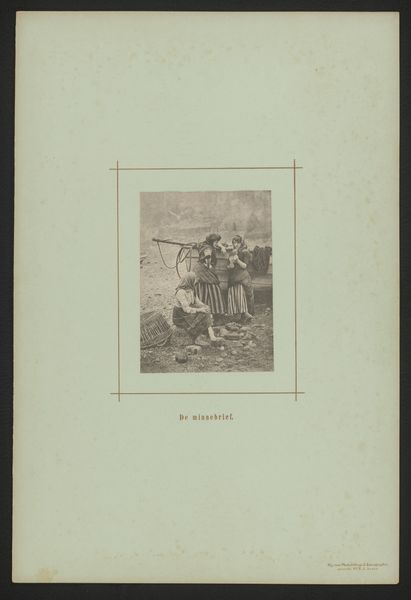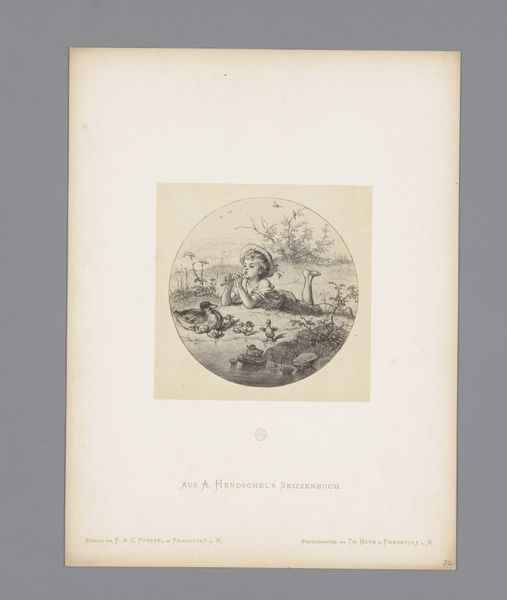
Fotoreproductie van een schets van een jager en zijn geliefde door Albert Hendschel before 1870
0:00
0:00
Dimensions: height 154 mm, width 122 mm
Copyright: Rijks Museum: Open Domain
Theodor Huth made this photographic reproduction of a sketch by Albert Hendschel. It features a hunter embracing his lover in a pastoral setting. The image evokes a sense of romantic idealism that resonated with 19th-century European audiences. Germany, during this period, was undergoing rapid industrialization and urbanization, which led to a growing nostalgia for rural life. The hunter, a traditional figure associated with nature and self-reliance, became a symbol of this longing for a simpler, more authentic past. The loving embrace suggests a retreat from modern life. The image also reflects the social and cultural values of the time, particularly the emphasis on romantic love and the idealized depiction of gender roles. To understand the artwork better, explore sources from the period, such as literature, social commentary, and visual culture. The meaning of art, we must remember, is always contingent on social and institutional context.
Comments
No comments
Be the first to comment and join the conversation on the ultimate creative platform.
